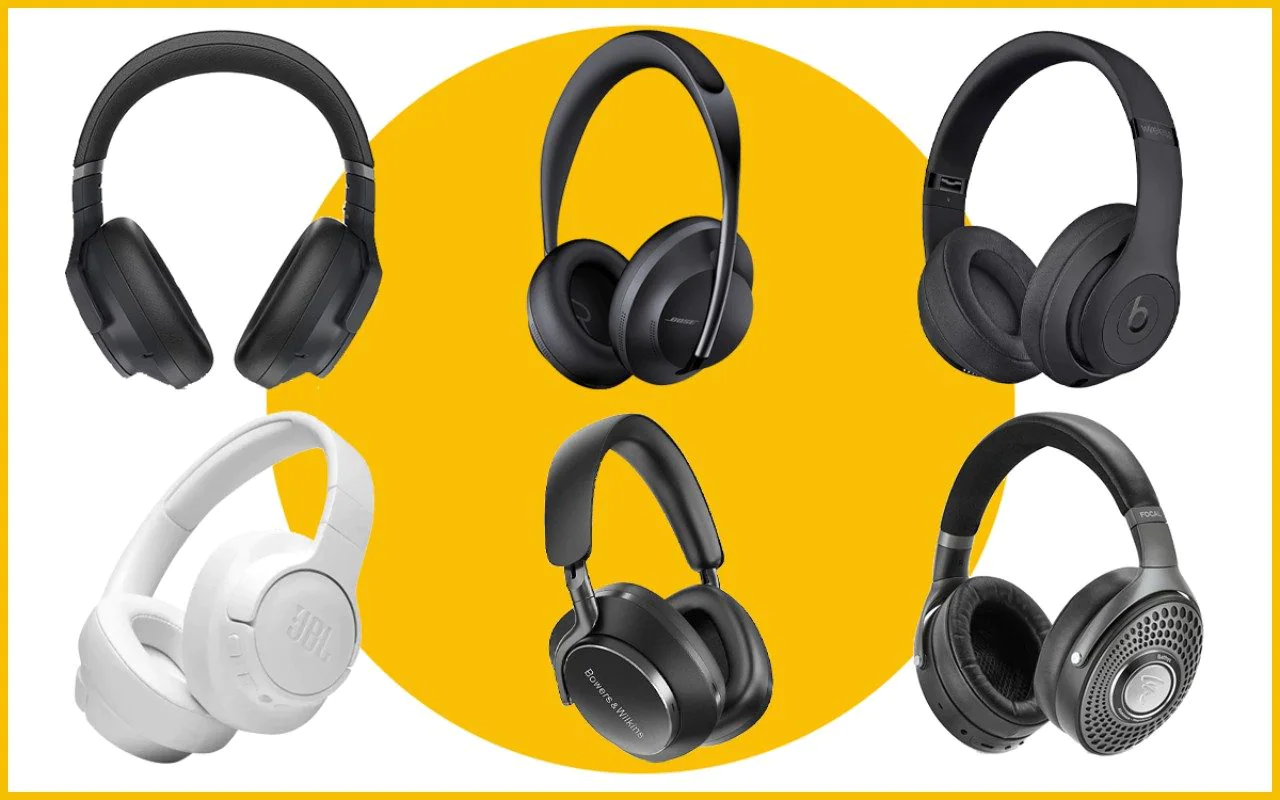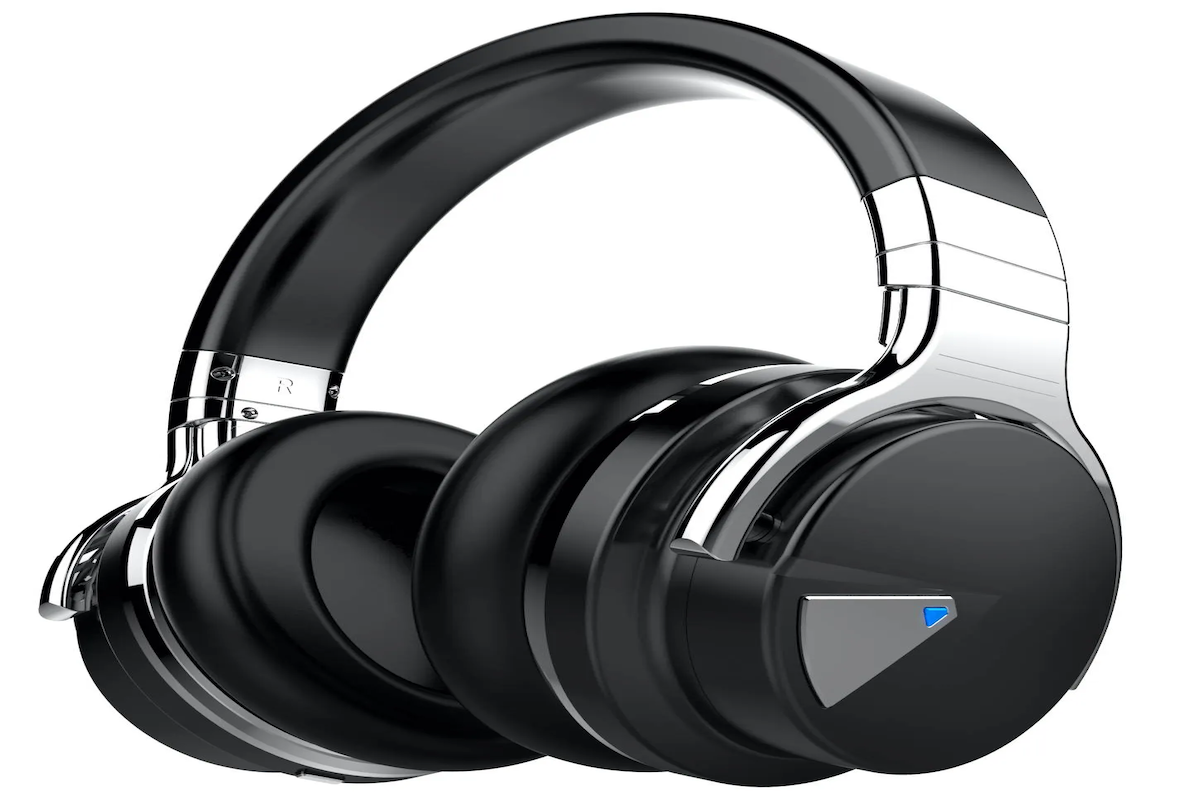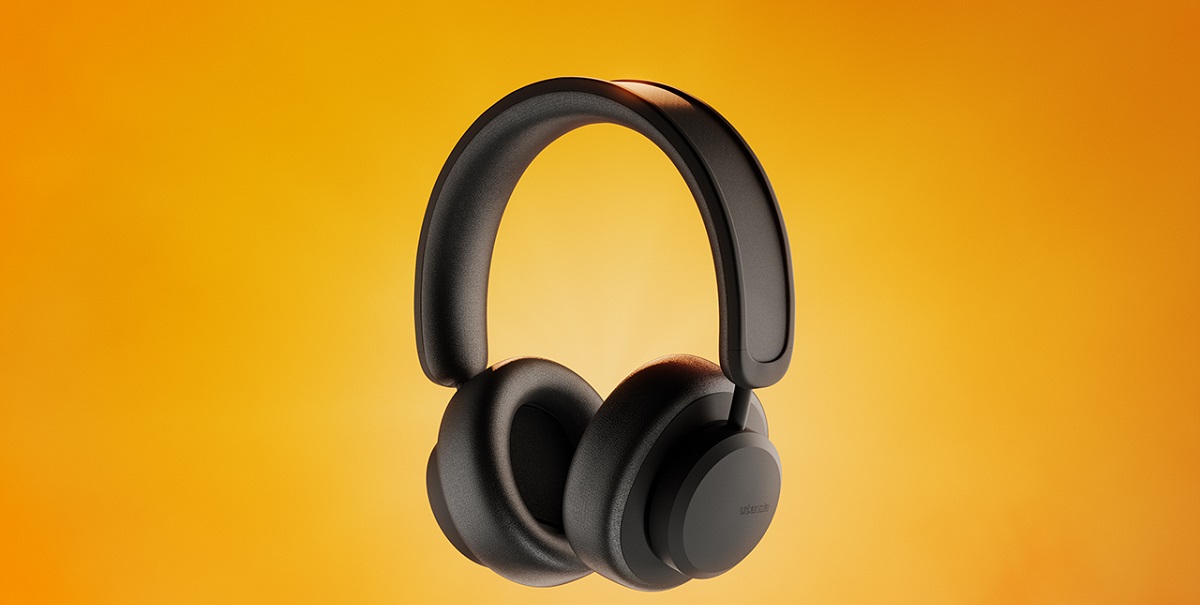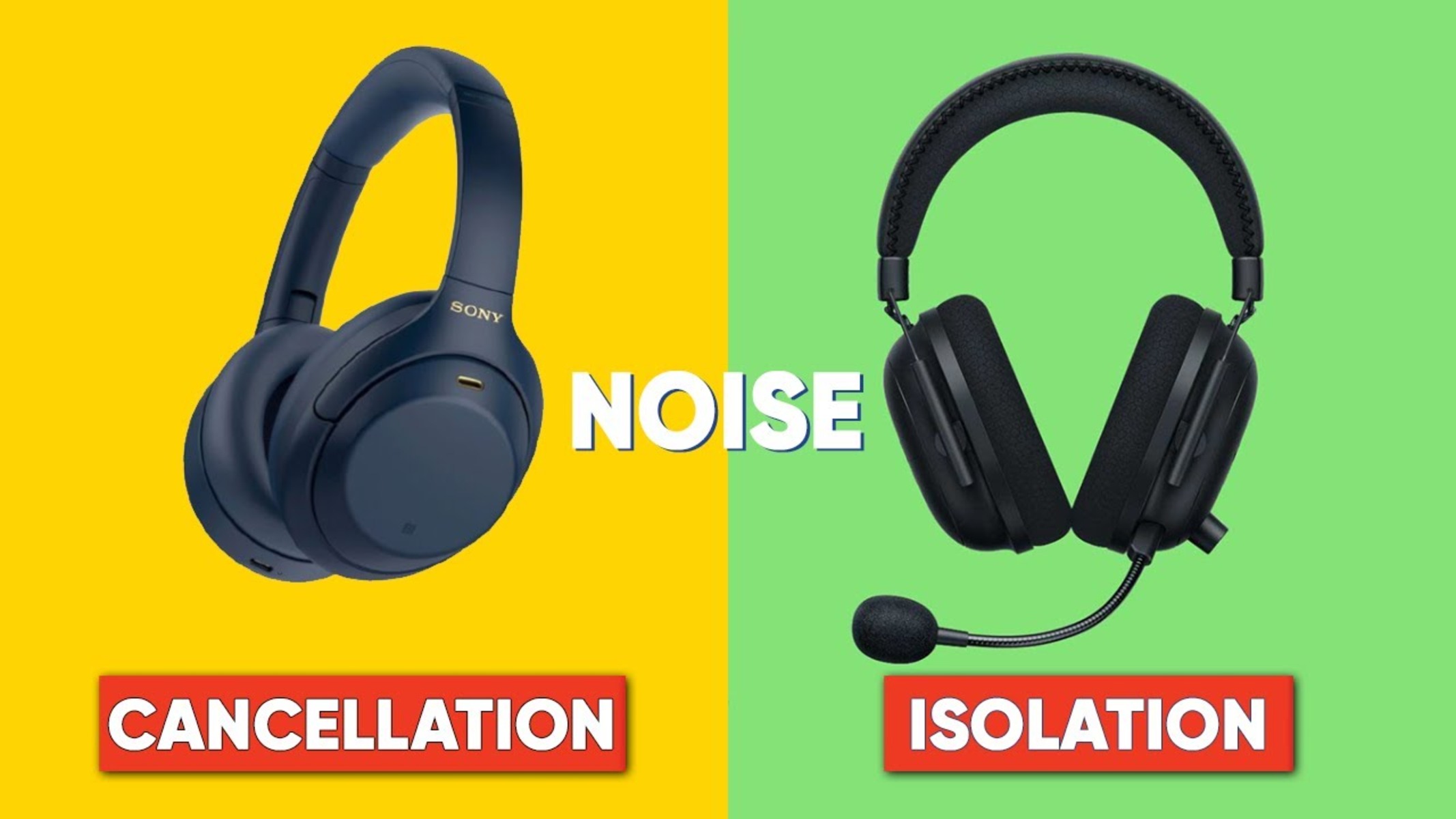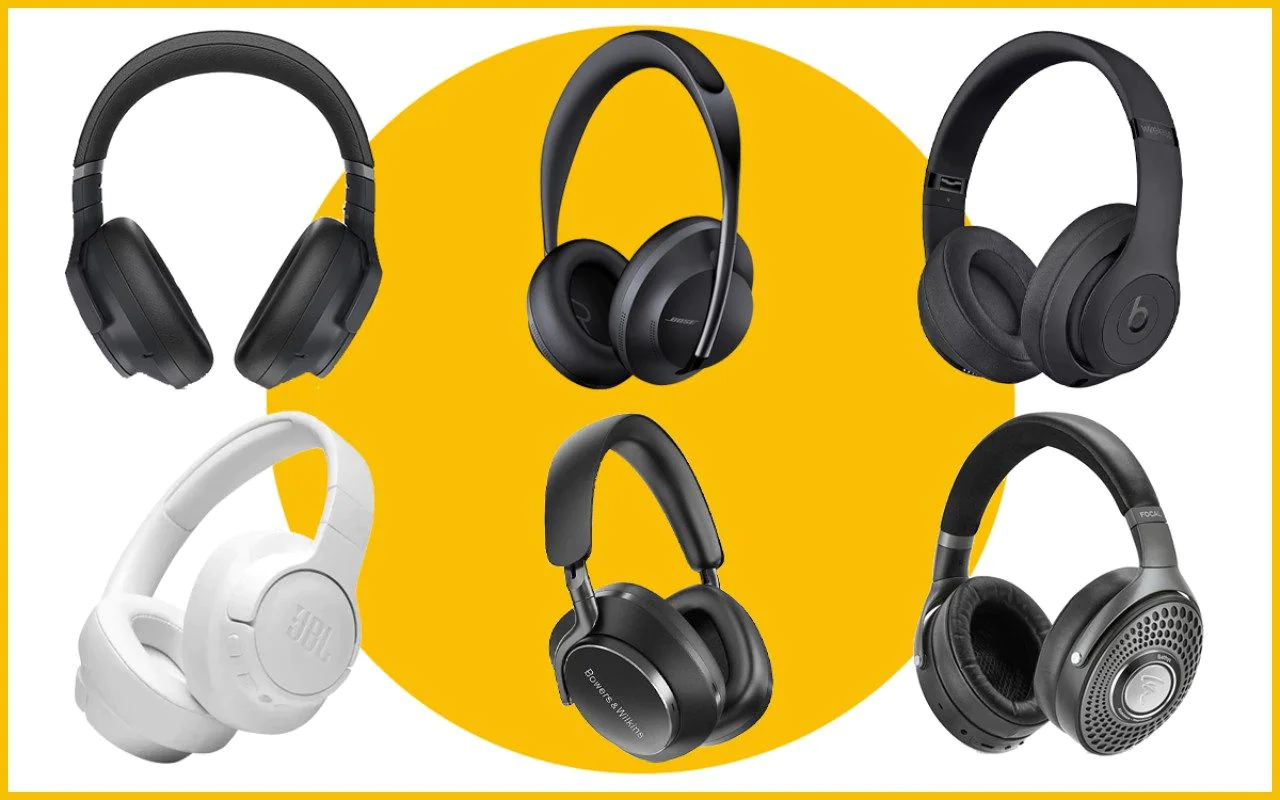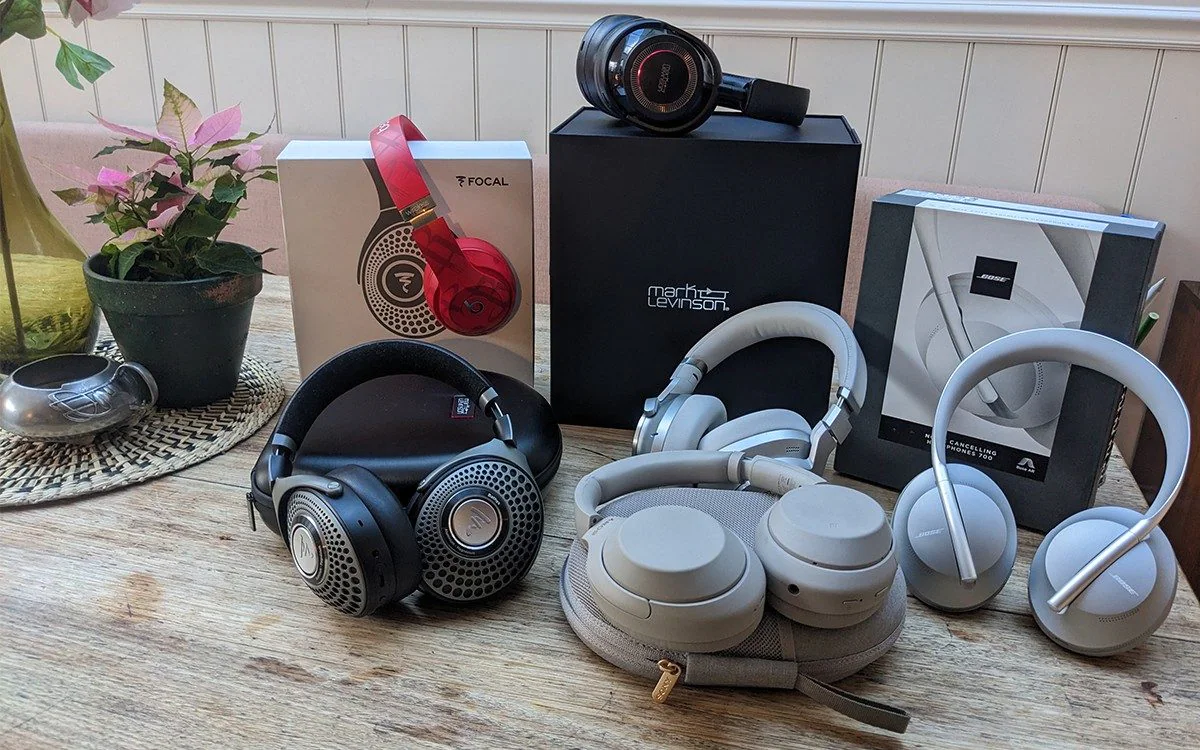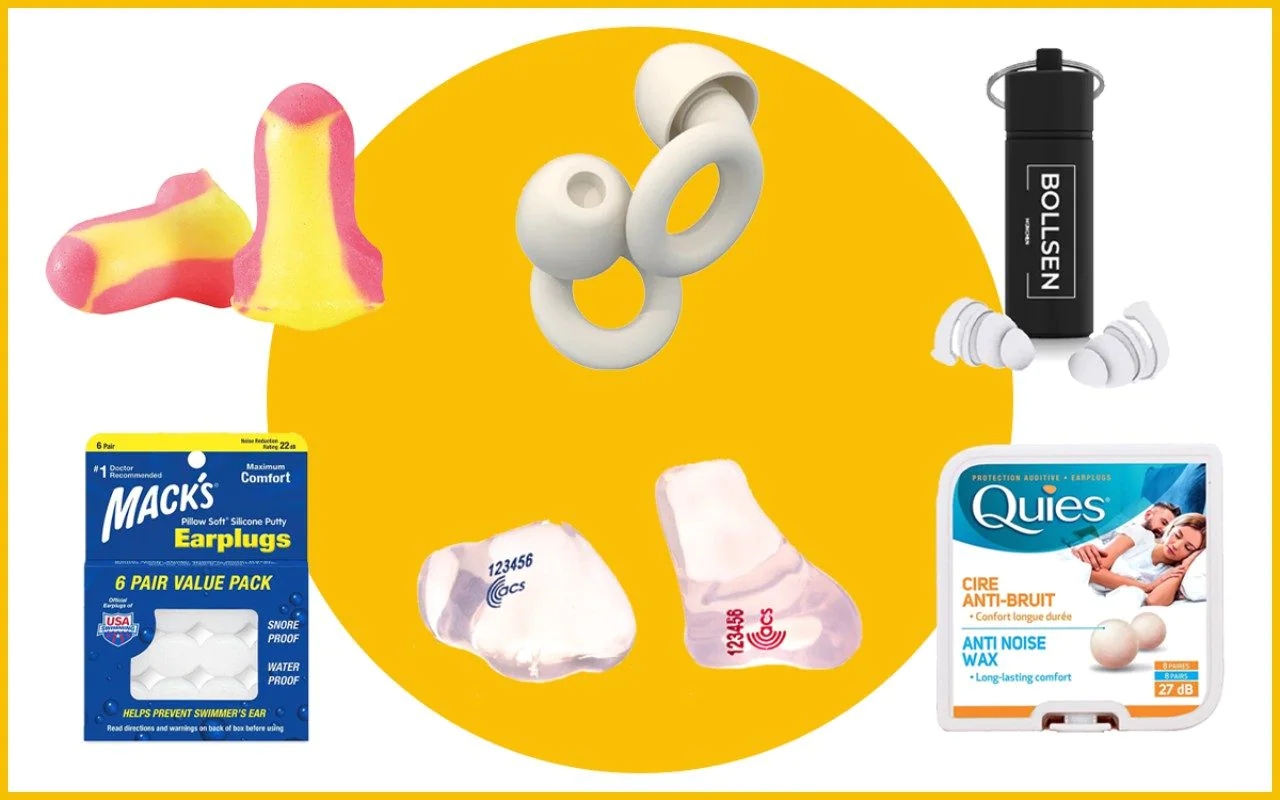Introduction
Noise cancellation technology has become increasingly popular in recent years, particularly in the realm of headphones and audio devices. If you’ve ever wondered how these devices are able to effectively eliminate background noise to create a more immersive listening experience, you’re not alone. This article will delve into the fascinating world of noise cancellation and provide a comprehensive overview of how it works.
When it comes to audio devices, background noise can be a major hindrance, especially in noisy environments such as airplanes, trains, or busy city streets. Thankfully, advancements in technology have made it possible to minimize or even eliminate unwanted noise. This is achieved through a concept known as noise cancellation, which involves the use of microphones, algorithms, and audio processing to counteract external sounds.
There are two types of noise cancellation methods: passive and active. Passive noise cancellation refers to the physical design of the headphones themselves, which includes materials and construction that naturally block out external noise. On the other hand, active noise cancellation (ANC) takes things a step further by actively detecting and canceling out external sounds in real-time.
ANC headphones work by utilising a combination of microphones and feedback loops. The microphones capture external sounds, while the feedback loops analyse and identify the frequency and amplitude of the noise. This information is then used to generate a sound wave that is the exact opposite in phase to the external noise, effectively canceling it out.
The process of noise cancellation is not as simple as it seems. It involves complex algorithms that process and adjust the sound signals to achieve optimal cancellation. These algorithms work in real-time, continuously adjusting the sound waves being generated to adapt to changes in the external environment. This ensures that the cancelling sound wave is always aligned with the incoming noise, resulting in an effective reduction of unwanted sounds.
It is important to note that noise cancellation should not be confused with noise reduction. While noise reduction simply reduces the overall volume of the sound, noise cancellation actively counteracts and eliminates the specific frequencies of external noise. This distinction is what makes noise cancellation technology so effective in creating a more immersive and enjoyable audio experience.
Now that we have a basic understanding of noise cancellation technology, let’s explore the benefits and limitations of this technology, as well as its applications in various industries.
The Basics of Noise Cancellation
Before diving into the intricacies of how noise cancellation works, it’s essential to grasp the fundamentals of this concept. At its core, noise cancellation aims to reduce or eliminate unwanted sounds in a given environment, allowing the listener to focus on desired audio without distractions.
Passive noise cancellation, also known as noise isolation, involves physical barriers that block out external noises. High-quality headphones and earbuds often employ this method by using materials like memory foam or silicone ear tips to create a seal in the ear canal, preventing outside sounds from entering. This approach is effective to some extent but may not be sufficient for blocking out louder or more persistent noises.
Active noise cancellation technology takes noise reduction a step further by actively combating external sounds. ANC headphones or devices rely on advanced electronic components to analyze and neutralize unwanted noise. This technology works best for continuous, low-frequency sounds such as the drone of an airplane engine or the hum of a fan.
The key to active noise cancellation lies in the concept of destructive interference. When a sound wave encounters another sound wave of equal amplitude and opposite phase, they cancel each other out. This cancellation occurs when the peaks and troughs of one wave align with the opposite peaks and troughs of the other wave.
To achieve this cancellation effect, ANC headphones use built-in microphones to capture the external sounds around the wearer. These microphones analyze the frequency and intensity of the incoming noise, sending this information to the headphone’s processor.
The processor then generates an “anti-noise” signal that is the exact opposite of the external sound wave. This generated signal is precisely timed and fed through the headphone’s speakers simultaneously with the audio the user wants to hear. When the anti-noise signal reaches the user’s ears, it combines with the external noise, effectively canceling out or greatly reducing its impact on the listening experience.
It’s important to note that active noise cancellation is most effective on consistent, low-frequency sounds rather than sudden or unpredictable noises. This is because the algorithms used in ANC technology require time to analyze and generate the appropriate anti-noise signal.
Furthermore, active noise cancellation works best when the external noise is relatively constant or consistent. For rapidly changing or unpredictable noises, such as speech or music, the ANC technology may not be as effective at canceling out the unwanted sounds.
Despite these limitations, active noise cancellation technology has significantly improved in recent years, providing users with a more immersive and enjoyable listening experience. From noisy commutes to busy airports, noise cancellation technology allows us to escape into our own world of auditory bliss.
Active Noise Cancellation
Active Noise Cancellation (ANC) has revolutionized the way we experience audio by effectively reducing unwanted external sounds. Unlike passive noise isolation, which relies on physical barriers, ANC employs advanced technology to actively counteract and cancel out noise in real-time.
The key principle behind active noise cancellation is based on the superposition of sound waves. By generating an “anti-noise” signal that is an exact replica of the incoming noise but in opposite phase, the two waves cancel each other out, resulting in a significant reduction in perceived noise.
ANC headphones are equipped with microphones strategically placed on the earcups or earbuds. These microphones pick up external sounds, sending the captured signals to a digital processing unit within the device. The processor then analyzes the audio data to identify the frequency, amplitude, and spatial information of the noise.
Using this information, the ANC headphones generate an inverse sound wave in real-time, precisely matching the frequency and amplitude of the external noise. The anti-phase sound wave is then combined with the desired audio signal and played back through the headphones. When these two signals reach the listener’s ears, the anti-noise wave cancels out the external noise, resulting in a much quieter and clearer listening experience.
While ANC is primarily associated with headphones, the technology is also used in other audio devices, such as speakers and car audio systems. It has even found application in industrial settings, where workers are exposed to high levels of noise. ANC technology can help protect their hearing by actively reducing the ambient noise.
Modern ANC headphones often incorporate multiple microphones to enhance noise cancellation efficiency. These microphones can be positioned both inside and outside of the earcups or earbuds, allowing for better noise detection and cancellation accuracy. By capturing sounds from various angles, ANC headphones can effectively cancel out noise from all directions.
One important aspect of ANC technology is its ability to adapt to different environmental conditions. The algorithms and digital signal processing used in ANC devices continuously monitor and adjust the anti-noise signals based on the changing noise profile. This dynamic adaptation ensures optimal noise cancellation performance, regardless of the surrounding environment.
It is worth mentioning that active noise cancellation works best for low-frequency and constant sounds. It is particularly effective in attenuating the drone of aircraft engines, the hum of air conditioning units, or the rumble of trains. However, ANC technology may not be as effective in canceling out high-frequency noises or sudden, transient sounds.
Despite its limitations, active noise cancellation has become an essential feature for many individuals seeking a more immersive and enjoyable audio experience. Whether you’re a frequent traveler, a professional in a noisy environment, or simply someone who enjoys music without distractions, ANC technology can greatly enhance the quality of your audio enjoyment.
How ANC Headphones Work
Active Noise Cancellation (ANC) technology has significantly transformed the way we listen to audio, providing an immersive experience in various environments. ANC headphones utilize a combination of advanced hardware and sophisticated algorithms to effectively reduce external noise and enhance the quality of the desired audio.
ANC headphones consist of several vital components that work together to cancel out unwanted sounds. One of the key elements is the built-in microphone array strategically placed on the headphones. These microphones pick up the ambient noises around the listener, capturing the audio signals that need to be canceled out.
The captured audio signals are then processed by a digital signal processor (DSP) or a dedicated ANC chip that analyzes the frequency, amplitude, and spatial characteristics of the external noise. The information obtained from the microphones allows the ANC system to generate an appropriate anti-noise signal.
This anti-noise signal is designed to be the exact opposite of the detected noise, both in frequency and phase. By producing sound waves that have the same amplitude but opposite phase as the external noise, the anti-noise cancels out the unwanted sound, effectively reducing its impact on the listener’s ears.
The generated anti-noise signal is combined with the desired audio signal, such as music or voice, and played through the headphone’s speakers. The listener then hears the desired audio along with the cancellation effect, resulting in a much quieter and immersive audio experience.
To achieve optimal noise cancellation, ANC headphones employ advanced algorithms that continuously adapt to changes in the external noise environment. These algorithms make adjustments in real-time, ensuring that the anti-noise signal aligns with the incoming noise, regardless of any variations or disturbances.
It is important to note that ANC headphones are most effective in canceling out low-frequency noise, such as the rumble of an engine or the hum of an air conditioner. These constant, repetitive sounds are easier to predict and cancel out using the anti-noise signal.
ANC headphones may not be as effective in canceling out sudden or transient noises, such as loud voices or sharp sounds, as the algorithms require time to analyze and generate the appropriate anti-noise response. However, ANC technology still contributes towards reducing the impact of these noises to some extent.
ANC headphones also offer different modes that cater to specific user preferences. Some devices provide a “transparency” or “ambient” mode that allows external sounds to pass through, providing awareness of the surroundings without the need to remove the headphones entirely.
In recent years, ANC technology has seen significant advancements, resulting in improved noise cancellation capabilities and better audio quality. From airplanes and trains to busy office spaces and city streets, ANC headphones have become an essential accessory for individuals seeking a more immersive audio experience while minimizing external distractions.
Microphones and Feedback Loops
Microphones play a crucial role in the effectiveness of Active Noise Cancellation (ANC) technology in headphones. They serve as the ears of the ANC system, capturing the surrounding sounds and providing the necessary audio data for the cancellation process.
ANC headphones typically incorporate multiple microphones strategically positioned on the ear cups or earbuds. These microphones work together to capture the external noise from different directions, allowing the ANC system to analyze and cancel out the noise effectively.
The microphones in ANC headphones are designed to be highly sensitive, capable of picking up a wide range of frequencies and amplitudes. This enables them to accurately capture the nuances of the surrounding noise and provide precise information for the cancellation process.
Once the microphones have captured the external noise, the audio signals are then fed to the headphone’s digital processing unit. The processing unit performs intricate calculations to determine the appropriate anti-noise signal needed to cancel out the captured noise.
One of the key components in ANC technology is the feedback loop. The feedback loop ensures that the anti-noise signal generated by the ANC system aligns with the incoming noise, resulting in effective cancellation.
The feedback loop works by continuously monitoring the cancellation performance and adjusting the anti-noise signal accordingly. It compares the original captured noise with the cancellation effect produced by the anti-noise signal to identify any discrepancies or errors.
If the cancellation effect is not optimal, the feedback loop makes iterative adjustments to the anti-noise signal, modifying parameters such as amplitude, phase, and frequency response. This constant monitoring and adjustment process ensures that the anti-noise signal aligns with the incoming noise, leading to improved cancellation performance.
The feedback loop relies on the microphones to capture the cancellation effect and compare it to the original noise. By analyzing these two signals, the ANC system can make precise adjustments to fine-tune the anti-noise signal and optimize the cancellation process.
In addition to the feedback loop, ANC headphones may also include a feed-forward system. This system uses an additional set of external microphones to capture the noise before it reaches the listener’s ears. The recorded noise is then used to generate the anti-noise signal, which is combined with the desired audio signal.
By utilizing microphones and feedback loops, ANC headphones can achieve accurate noise cancellation, significantly reducing unwanted external sounds. The combination of sensitive microphones and sophisticated algorithms ensures a seamless listening experience, allowing users to enjoy their audio without the disruptions of the surrounding environment.
Noise-Canceling Algorithms
Noise-canceling algorithms play a vital role in the effectiveness of Active Noise Cancellation (ANC) technology in headphones. These algorithms are responsible for processing the captured audio signals, analyzing the characteristics of the noise, and generating the appropriate anti-noise signal for cancellation.
The main objective of noise-canceling algorithms is to identify the frequency, amplitude, and spatial information of the external noise. This information is crucial for generating an anti-noise signal that precisely matches the noise, resulting in effective cancellation.
Most ANC headphones employ digital signal processing (DSP) techniques to implement their noise-canceling algorithms. These algorithms utilize mathematical calculations and filter processing to analyze the incoming audio signals and generate the desired anti-noise signal.
One common noise-canceling algorithm used in ANC is the Adaptive Filter algorithm. This algorithm continuously analyzes the captured noise signals and dynamically adjusts the parameters of the anti-noise signal to match the incoming noise. It adapts in real-time to changes in the noise profile, ensuring optimal cancellation performance.
The Adaptive Filter algorithm achieves effective noise cancellation by continuously updating the coefficients of the digital filter used to generate the anti-noise signal. These coefficients determine the amplitude, phase, and frequency response of the anti-noise signal, allowing it to align with the incoming noise and cancel it out efficiently.
In addition to the Adaptive Filter algorithm, ANC headphones may utilize other noise-canceling algorithms, such as Feedforward and Feedback. Feedforward algorithms use the external microphones to capture the noise and generate the anti-noise signal in advance, similar to a predictive model. Feedback algorithms, on the other hand, rely on the feedback loop to compare the original noise with the cancellation effect and make adjustments to fine-tune the anti-noise signal.
The performance of noise-canceling algorithms is influenced by various factors, including the quality of the microphones, the accuracy of the algorithms, and the amount of computational power available. As technology continues to advance, more sophisticated algorithms are being developed to enhance the noise cancellation capabilities of ANC headphones.
Some newer ANC headphones also employ machine learning techniques to improve their noise-canceling algorithms. Machine learning algorithms can analyze massive amounts of data and learn from it, enabling ANC headphones to adapt to different noise environments more effectively.
It is worth noting that different ANC headphones may employ different noise-canceling algorithms, each with its own advantages and limitations. Manufacturers continually work on refining and optimizing these algorithms to provide users with the best possible noise cancellation experience.
Ultimately, noise-canceling algorithms are instrumental in allowing ANC headphones to achieve impressive noise reduction and provide users with a more immersive and uninterrupted audio experience.
Noise Reduction vs. Noise Cancellation
Noise reduction and noise cancellation are two terms often used interchangeably, but they refer to different techniques for managing unwanted sounds. While they share the goal of minimizing noise, understanding the distinctions between these two approaches is important.
Noise reduction refers to the process of reducing the overall volume or intensity of a sound. It involves passive methods, such as physical barriers or materials that block or absorb sound waves. Noise reduction techniques aim to create a quieter environment by reducing the transmission of sound from the source to the listener. Examples of noise reduction methods include soundproofing walls, using acoustic panels, or wearing earplugs.
Noise cancellation, on the other hand, takes a more active approach to address unwanted noise. It is a specialized technology that uses advanced hardware, algorithms, and digital signal processing to actively counteract and cancel out specific frequencies of external noise.
Active Noise Cancellation (ANC) technology, as mentioned earlier, works by capturing the external noise using microphones and generating an anti-noise signal that is precisely out of phase with the incoming noise. When these two signals combine, they cancel each other out, resulting in a significant reduction in perceived noise.
Noise cancellation technology is particularly effective in reducing low-frequency, consistent sounds, such as the rumble of an airplane engine, the hum of air conditioning units, or the drone of a train. It excels at attenuating such background noises by actively countering and canceling out their specific frequencies, making it easier for listeners to focus on desired audio.
While noise reduction techniques provide general noise-dampening benefits, they may not be as effective in blocking out specific frequencies or canceling out continuous noise. Noise cancellation, however, targets specific frequencies and actively removes them from the acoustic environment, leading to a more immersive and enjoyable audio experience.
It is worth noting that noise reduction and noise cancellation can complement each other. For example, some headphones combine passive noise reduction, such as noise-isolating ear cups that physically block external sounds, with active noise cancellation technology to provide a more comprehensive noise reduction solution.
Additionally, noise reduction can be effective in situations where noise cancellation is not possible or practical. For instance, in high-risk industrial environments, workers may rely on noise reduction methods, such as wearing protective earmuffs, to reduce the overall noise level and protect their hearing.
In summary, noise reduction focuses on decreasing the overall volume or intensity of sound, while noise cancellation actively counteracts and cancels out specific frequencies of external noise. Both techniques have their merits and can be utilized depending on the situation and desired outcomes.
Benefits and Limitations of Noise Cancellation
Noise cancellation technology offers several benefits that enhance the listening experience, but it also has limitations to consider. Understanding both the advantages and constraints of noise cancellation can help individuals make informed decisions about using this technology.
Benefits of Noise Cancellation:
1. Improved audio quality: Noise cancellation allows users to enjoy audio content with greater clarity and detail by reducing or eliminating background noise that can interfere with the desired sound.
2. Enhanced focus and concentration: The ability to block out or significantly reduce external noise can improve concentration and focus. This is particularly beneficial in noisy environments such as offices, coffee shops, or during long flights.
3. Reduced stress and fatigue: Being exposed to continuous or loud background noise can cause stress and fatigue. Noise cancellation technology helps create a more peaceful and relaxing listening environment, promoting well-being and reducing the negative effects of noise.
4. Privacy and confidentiality: Noise cancellation can provide a sense of privacy by preventing others from overhearing conversations or interfering with personal audio experiences in public settings.
5. Enjoyment of finer audio details: Noise cancellation allows listeners to appreciate subtle nuances and finer details in their audio content that may otherwise be masked by background noise.
Limitations of Noise Cancellation:
1. Effectiveness on specific noise types: Noise cancellation is most effective at reducing low-frequency, constant sounds. It may not be as effective in canceling out sudden or high-pitched noises, such as the sound of a nearby car horn or someone shouting.
2. Power consumption and battery life: Active noise cancellation requires additional power to run the microphones and algorithms. This can have an impact on the battery life of ANC devices, requiring frequent recharging or replacement of batteries.
3. Cost: ANC technology often raises the price of headphones and other audio devices. The advanced hardware and processing capabilities required for noise cancellation can make ANC devices more expensive compared to non-ANC alternatives.
4. Dependency on a proper fit: Achieving optimal noise cancellation may require a proper fit between the headphones or earbuds and the listener’s ears. A poor fit can compromise the effectiveness of noise cancellation, reducing its efficacy.
5. Awareness of the surroundings: Complete noise cancellation may lead to a lack of awareness of external sounds. This can be a concern in situations where situational awareness and hearing environmental cues are important, such as walking in busy streets or when engaging in outdoor activities.
Understanding the benefits and limitations of noise cancellation technology is crucial for individuals deciding whether to invest in ANC devices. While noise cancellation offers significant advantages in terms of audio quality and concentration, it is important to consider its limitations and potential trade-offs to determine its suitability for specific situations and personal preferences.
Conclusion
Noise cancellation technology has revolutionized the way we experience audio by reducing unwanted external sounds and providing a more immersive and enjoyable listening experience. Through the use of microphones, advanced algorithms, and digital signal processing, active noise cancellation (ANC) headphones effectively counteract and cancel out specific frequencies of external noise, allowing users to focus on desired audio content.
The benefits of noise cancellation are significant. It improves audio quality, enhances focus and concentration, reduces stress and fatigue, and provides a sense of privacy. By blocking out or minimizing background noise, noise cancellation technology enables users to fully appreciate the nuances and finer details of their audio experience, whether it’s music, podcasts, or phone calls.
However, noise cancellation has its limitations. It may not be as effective in canceling out sudden or high-pitched noises and depends on a proper fit to achieve optimal cancellation results. Power consumption and cost are also factors to consider, as active noise cancellation requires additional power and can increase the price of audio devices.
Despite these limitations, the advancements in noise cancellation technology continue to push the boundaries of audio experiences. Manufacturers are constantly refining noise-canceling algorithms, incorporating machine learning techniques, and improving hardware components to deliver increasingly effective noise cancellation performance.
Whether you’re a frequent traveler, a professional seeking focus in a noisy environment, or simply someone who wants to enjoy audio content without distractions, noise cancellation can significantly enhance your listening experience.
By understanding the benefits and limitations of noise cancellation, you can make informed decisions about investing in ANC headphones or devices that suit your needs and preferences. The ever-evolving field of noise cancellation continues to shape the way we interact with audio, providing us with immersive, private, and enjoyable soundscapes in both our personal and professional lives.









